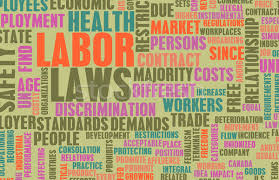Fall 2018 Featured Research Profile
“You’re [not] fired!”–GCER Fellow Toshi Mukoyama and Sophie Osotimehin explore the dynamic linkages between employment protection regulations and firms’ innovation decisions.

In the U.S. economy, the magnitude of reallocation is quite extensive. Gross job creation, the total increase in employment in expanding establishments, is, on average, about 17% of all employment in each year. At the same time, gross job destruction, the total decrease in employment in contracting establishments, is of similar magnitude. This means that a large number of jobs are reallocated across firms and establishments every year. Some economic policies, meanwhile, can act as barriers to the reallocation of workers. For example, many countries have enacted employment protection legislation, such as redundancy procedures and mandatory severance payments.
Past research has shown that these regulations reduce reallocation of workers and affect macroeconomic performance. The logic is simple: when firing costs are imposed, firms are less likely to fire workers. However, because firms are forward-looking and know that it is difficult to fire workers, they are also more reluctant to hire. Firing regulations hence reduce both firing and hiring and therefore lower worker reallocation. This reluctance to fire and hire has consequences on the aggregate productivity. Because of firing costs, a firm with high productivity does not expand quickly enough, and a firm with low productivity does not contract very quickly either. This misalignment between the firm’s productivity and its size, often called “misallocation” in the literature, lowers the aggregate productivity.
In a recent working paper, entitled “Barriers to Reallocation and Economic Growth: the Effects of Firing Costs” (coauthored with Sophie Osotimehin at UQÀM), Georgetown economist and GCER Fellow Toshihiko Mukoyama takes a novel approach to analyzing how firing regulations affect economic growth. Looking beyond the hiring and firing incentives of firms, Mukoyama and Osotimehin build a model that focuses on firms’ innovation decisions. In their model, changes in the firms’ innovation decisions modify the degree of labor reallocation across firms. Firing costs create barriers to reallocation that, in turn, alter the firms’ innovation decisions. Significantly, Mukoyama and Osotimehin show that not all firms respond the same way to firing costs, and the firms’ responses differ in unexpected ways.
The model differentiates between new firms (entrants) and old firms (incumbents). Both types try to innovate. Entrants with successful innovation can take over the market share of existing firms (creative destruction) and incumbents with successful innovation can increase their market shares.
Entrants, when they weigh in on whether to innovate and enter, are aware of the burden of future firing costs. The misallocation of production resources also means that they will not receive as much profit as they would have in the economy without these costs. Thus, entrants have less incentive to enter, and their innovation rate declines with firing costs.
For incumbents, however, the effect of firing costs is more ambiguous. Incumbents also recognize that the benefit from innovating is reduced, for the same reason as for the entrants. But because firing costs discourage entry and hence reduce creative destruction, incumbents are now less worried about losing their market shares to entrants in future. This change in environment encourages them to innovate more. Another reason why incumbents may more often innovate is that innovating allows firms that are “too large” (larger than they are supposed to be) to escape the future tax burden. These firms will not need to downsize and pay the firing costs if they are successful at innovating, since innovation raises the demand for their product. Thus they have an extra incentive to innovate.
In the authors’ quantitative analysis, innovation rates by entrants fall while innovation rates by incumbents rise after a firing tax is introduced. The former effect dominates, and the aggregate productivity and output growth falls. The decline in the growth rate would be more severe in economies where new firms conduct a larger part of the aggregate innovation. Evaluating the contribution of new firms to growth is therefore key to better understanding the overall impact of firing regulations. Because even a small change in the growth rate can affect the consumers tremendously, recognizing the growth effect of such policies and quantifying them should be central for analyzing policy reforms.
